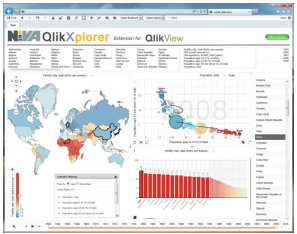Tibco Spotfire is already a popular product for finding the proverbial needles in the haystack, but customers are telling Tibco that the haystacks are getting bigger. Oil and gas operations, for example, are gathering more information from well sensors. Manufacturers are grabbing more production data off of shop floors. And marketers are gathering more customer analysis and segmentation information through click streams and social networks. As the data stacks up, the nature of the analysis changes, according to Steve Farr, a Tibco Spotfire senior product marketing manager.
"It's tempting to think you can identify the important trends in a small subset of the data, but big data analytics is about considering all of the data so you also see the exceptions and outliers," Farr told InformationWeek. "It's in the outliers that you find fraud, risk, and the things that are growing wrong." You can also find latent patterns in that bigger picture that reveal opportunities.

